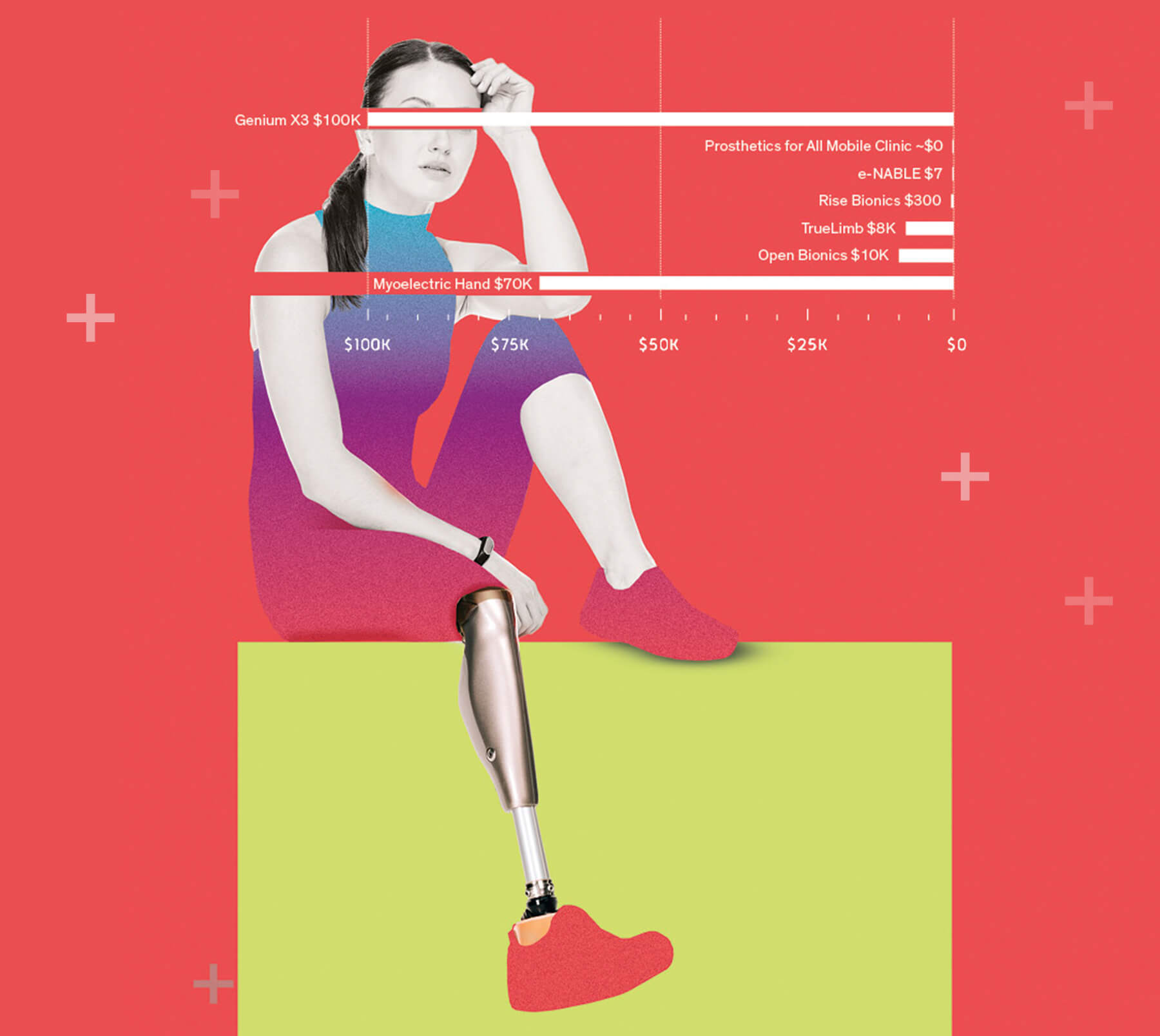A Leg Up for Humanity
The most advanced prosthetic limbs can cost upwards of $70,000. Brain- Robotics’ myoelectric hand, along with next-gen artificial legs being developed at MIT Media Lab and the Bionic Leg from the University of Utah’s Bionic Engineering Lab, will all become commercially available within the next five to ten years, but are likely to be very expensive.
A recent analysis by the RAND Corporation shows why investing in prosthetic technology is worth it. RAND compared health outcomes for people with abovethe- knee limb loss using microprocessorcontrolled prosthetic knees to outcomes for those using analog prosthetic knees. While wearers of microprocessorenhanced knees spent roughly $15,000 a year in prosthetic-related costs— $1,700 more than analog knee users— they saved $4,600 annually in direct and indirect healthcare costs (thanks to fewer injuries and lower caregiving costs) compared to analog-knee wearers—a $2,900 gain. Perhaps most importantly, while wearers of microprocessor-equipped prosthetic knees in the study lived about one month longer than their analog counterparts, RAND determined that they gained almost 11 months of “quality-of-life-adjusted” time per person over the 10-year study. That’s 11 extra months to engage in productive, rewarding activities—aka healthspan—a boon both to those with limb loss and to society.
-
11 MONTHSGained by prosthetic users to engage in more demanding, active pursuits
-
$4.6 THOUSANDSaved annually by microprocessor controlled knee users vs. analog prosthetic knee users
Cartilage doesn’t have a blood supply, so it’s hard to regenerate. With what we call biologics, we’re trying to grow things before you need them. We will likely be able to regrow a knee in the next 15 years. We can do so in a petri dish, so if we can build the right scaffold to transplant it with robotic assistance, we can make it happen.
Dr. Martin Roche
Orthopedic knee surgeon, Holy Cross Orthopedic Institute
While most high-end bionic limbs are still priced like high-end automobiles, 3D printing is changing the prosthetics market rapidly. Open Bionics’s customizable 3D-printed Hero Arms (including a Black Panther: Wakanda Forever model) start around $10,000 and are covered by Medicare. Unlimited Tomorrow’s 3D-printed TrueLimb, mentioned at left, costs less than $8,000 with capabilities that only a few years ago would have carried a price tag above $50,000.
The future looks even brighter for affordability and access to prosthetic technology. Bioengineer Hugh Herr—a double amputee and cohead of MIT’s Yang Center for Bionics—and his former student David Moinina Sengeh, Sierra Leone’s chief technology offificer, lead Prosthetics for All—a mobile clinic providing affordable or even free 3D-printed prosthetics to Sierra Leoneans who have lost limbs. In India, Rise Bionics makes $300 legs whose wearers have outperformed competitors using $100,000 prosthetics in paralympic competition. The e-NABLE network—comprising thousands of volunteers in more than 100 countries— collaborates to produce free or low-cost 3D-printed prosthetics for anyone in need.
While millions of us have opted to replace worn-out knees and hips with artifificial joints, Herr predicts that as limbs age and become compromised, people will move beyond joints to replace entire flflesh-and-blood limbs with durable prosthetic versions connected to our brains by seamless, AI-augmented neural interfaces.

